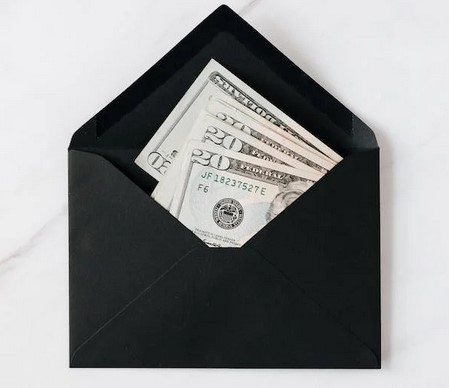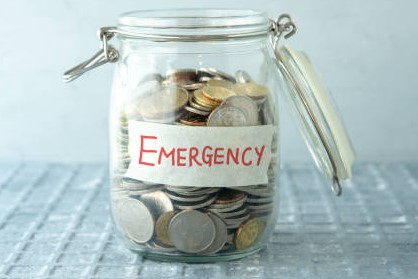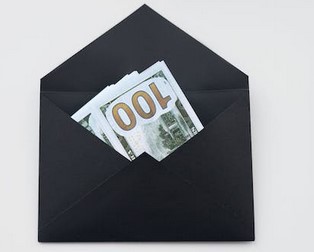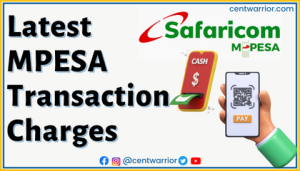Budgeting is easier said than done, and one challenge people have is tracking expenses and staying accountable, and that’s where the Cash Envelope Budgeting System comes in.
This budget tracking or budgeting method, popularized by financial expert and talk show host Dave Ramsey, allows you to assign cash to specific expense categories such as food, rent, medical care, insurance, and transport.
By doing so, you limit yourself to only spending what’s in the envelope, and that’s where factors like budget tracking and accountability come into the picture.
Cash Envelop is popular nowadays, and on Tik Tok in particular, the budgeting technique is known as Cash Stuffing. It’s designed for people who mostly pay with cash or prefer not to pay the unnecessary bank and MPESA transaction charges, even though it means forgoing some benefits that come with cashless payments.
However, that doesn’t mean you cannot pay for online purchases, as Envelope budgeting allows you to set aside an envelope for such expenses.

To help you understand the cash envelope budgeting method better, we’ll look at the following:
- What is the cash envelope system in budgeting?
- How does Envelope budgeting help with budgeting?
- Pros and cons of Envelope budgeting
- How to start a Cash Envelope budget?
- Does Envelope budgeting work?
- Does Envelope budgeting work with online purchases?
- What if an envelope runs out of cash?
- What about financial emergencies?
- How about leftover cash? What happens to it?
- Envelope budgeting alternatives
Let’s dive in!
What Is the Cash Envelope Budgeting System?
The Cash Envelope system, popularly known as Envelope Budgeting or Cash Stuffing, is a budget tracking method that allows you to assign cash to specific budget categories.
Each labeled envelope represents a specific expense in your budget, and you are only allowed to take money to pay for an expense that matches its intended category.
For example, you can have envelopes for rent, food, fees, savings, debt payment, and utilities, among other monthly costs.
How Does the Envelope System Help with Budgeting?
The goal of setting up an envelope budget system is to allow you to discipline yourself financially when it comes to spending your income.
It starts with determining your take-home pay and then budgeting for it. When budgeting, you must list all your expenses and set spending limits for each.
In that case, you must have a rough estimation of how much variable expenses like food, groceries, and utilities will cost. You must then assign an envelope to each category and label it before stashing it with cash.
After that, you must stick to your budget, which means you shouldn’t take money from one envelope category to meet another (different) expense. If an envelope runs out of cash, it should wait till the end of the month when you make another budget.
That’s how Envelope Budgeting instills financial discipline and enables you to stay accountable!

Pros and Cons of Envelope Budgeting
Pros of Cash Envelop Budgeting System
Envelope budgeting generally enjoys these advantages:
- Budgeting discipline – An envelope budget system allows you to only spend the many in a specific envelope for a particular category of expense, and that builds your budgeting discipline.
- Expense tracking – Since you’ll be paying in cash (most times), you can see how much you spend each time you take money out of the envelope. In that case, you can curb your spending if you fear a particular envelope running out too fast.
- Easy saving – The envelope system allows you to assign an envelope to your savings, allowing you to save faithfully. And in case you’ve some money left, you can roll it over to your savings.
- Avoid unnecessary transaction fees – With mobile and bank transactions come transactional charges. You, however, don’t have to pay them since you pay in cash. Of course, there are a few exceptions.
- Avoid missed payments – Since you have an envelope for each payment you make in a month, including rent and debt, it’s hard to miss a payment. That’s unless you forget to budget for it or you happen to take out the money to fund another budget category (which is not advisable).
- Realistic budgeting – An envelope budget system enables you to assign cash to expenses you are familiar with and within your spending power. You plan for the money you have, and that allows you to be realistic with your spending habits and expectations.
- Can serve as an emergency fund – Since you mostly need cash to tackle an emergency, you can use an envelope budget system like an emergency fund. Or better, you can assign one envelope for emergencies and continue refilling it monthly when you withdraw from it.

Cons of Cash Envelop Budgeting System
Envelope Budgeting also suffers a few concerns, and the most notable ones are as follows:
- Safety risk – Carrying cash around or keeping it at home is unsafe. There’s always the risk of someone stealing it, or you may lose it in other ways.
- Can be cumbersome – Since you’ve to list all the budget categories and assign a spending limit to each, Envelope Budgeting can be cumbersome or confusing.
- Some family members may disagree (with the budgeting formula) – You must get everyone the budget affects to agree on how you intend to spend the money. Sadly, some family members may refuse to cooperate, making it hard for you to execute the budgeting plan.
- You may miss out on cashless payment rewards – Since you’ll be paying in cash, you’ll miss rewards such as Bonga points when using MPESA and credit card reward points when paying with credit cards.
- Hard to track online payments – It’s not easy to track online payments as it is to track cash payments. You may need to keep a receipt and factor in the transaction charges.
- You may forget an expense – Envelope Budgeting compels you to list all your expenses before assigning cash to each category. You’ll have difficulty adjusting the budget if you forget one important one.
How to Start Cash Envelope System?
Below are the five critical steps for starting a cash envelope budget:
Step 1 – Determine Your Take-Home Pay
How much do you earn per month? Note it and remember that it includes your salary, side hustle, and investment earnings.
You get your take-home pay from deducting taxes, contributions like NHIF and NSSF, and other mandatory deductions from your cumulative monthly earning.
Step 2 – List Your Budget Categories
Now that you know how much you spend for the month, list all the categories. Remember, it’s an envelope for each expense category. Some of the envelope budgeting system categories to include are:
- Rent
- Utilities
- Food and groceries
- Healthcare/emergency medical costs
- Insurance
- Personal care/grooming
- Subscriptions (internet and TV)
- Transport/gas
- Giving/Donations
- Trips/vacation
- Fun/entertainment
- Minimum debt payment
- Child care/school fees
- Savings
- Miscellaneous
Remember, you don’t have to list everything on the above list, and you can add some more depending on your budgeting needs and spending power.
Step 3 – Set Spending Limits
Once you have the expense list ready, it’s time to set limits on each, depending on your take-home pay.
Start with the fixed expenses such as rent, insurance, minimum debt payment, subscriptions, and child care since you’ve to pay them and you know how much exactly you need.
Then adjust the variable expenses to balance with the remaining amount. Variable expenses include food, groceries, utilities, medical emergencies, entertainment, and transport.
It’s crucial to involve other people the budget affects, such as your spouse and kids, to ensure they are on board. They’ll help you stay accountable to the budget system.
Step 4 – Prepare The Envelopes
Get as many envelopes as your budget categories and name each of them. Then put each into each depending on your budget limits as set in step 3.
Step 5 – Start Spending According to Plan
Now that your budget is ready, you can start spending. Ensure you stick to each budget category, and if an envelope runs out of cash, wait till the next month. But to avoid that, go slow on your spending.
Does Envelope Budgeting Work?
It’s no denying that Envelope Budgeting can be cumbersome and risky since you could lose the money to thieves. It’s also true that you may miss out on cashless payments rewards and forget to budget for an expense.
What’s undeniable is how realistic the budgeting system is. With Envelope Budgeting, you plan for expenses you can afford and with the money you already have.
The budgeting system is visible and tangible, something you don’t get from most budgeting techniques. Ultimately, it instills financial discipline and accountability, making it effective.

Does a Cash Envelope Budget Work with Online Expenses?
Ideally, the envelope budget system is designed for cash payments. However, that doesn’t mean you cannot use it to buy things and pay bills online.
However, you must create an envelope for online expenses and leave its cash equivalent in the bank or mobile wallet. In that case, you can only use that reserve to shop online and make payments via phone or bank.
What If a Cash Envelope Runs Out of Cash?
Sometimes some envelopes may run out of cash, which may tempt you to withdraw from others yet to run out. But should you? Of course not.
You’ve to wait till the end of the month to set a new budget. But to avoid draining an envelope before the month’s end, learn to monitor your spending and go slow on some expenses.
What About Financial Emergencies?
Generally, it’s best to set up an emergency fund to handle your financial emergencies. If you don’t have it, learn how to build a fully funded emergency fund.
However, if you don’t have one and are facing an emergency, you may need to convene (you and your spouse) for an emergency budget adjustment meeting).
That’ll allow you to agree on adjusting your budget to meet the financial emergency. Of course, if you have one, the emergency sitting comes after draining the emergency envelope.
What Happens to Leftover Cash?
Some envelopes will likely have cash at the end of the month before making the next budget. So, what should you do?
Well, you can reward yourself for staying under budget. It may mean getting a gift for yourself. Alternatively, you can roll over the cash to the next month and improve on a specific category limit.
You can also use it to pay down debt much quicker or redirect it to your savings. It’s all up to you!
Best Alternatives to Envelope Budgeting System
The Cash Envelope system is not the only budgeting method out of there. There are others which include the following:
- Zero-Based Budgeting – Zero-Based Budgeting is our most recommended budgeting formula, where you assign a job to every coin you make. Here, the difference between your take-home pay and expenses is zero.
- Pay Yourself First (80/20 Budget) – This rule requires you to first assign 20% of your take-home pay to your money goals (savings and debt repayments) and spend the rest (80%) on other expenses.
- 50/30/20 Rule – The 50/30/20 Budgeting Rule dictates that you allocate 50%, 30%, and 20% of your take-home pay to necessities (needs), wants, and financial goals, respectively.
- 70/20/10 Budget – This budgeting rule enables you to allocate 70%, 20%, and 10% of your take-home pay to expenses, savings, and investments, respectively.
Is The Cash Envelope Budgeting System Good for You? Concluding Thought
Generally, the cash envelope system is good for you if you mostly pay in cash, want to avoid credit card and mobile payments and their associated fees, or you find it hard to stick to any budget.
But as shared, it’s not the only budgeting method. You can consider others, and if you need help learning how to budget, talk to us on social media.







